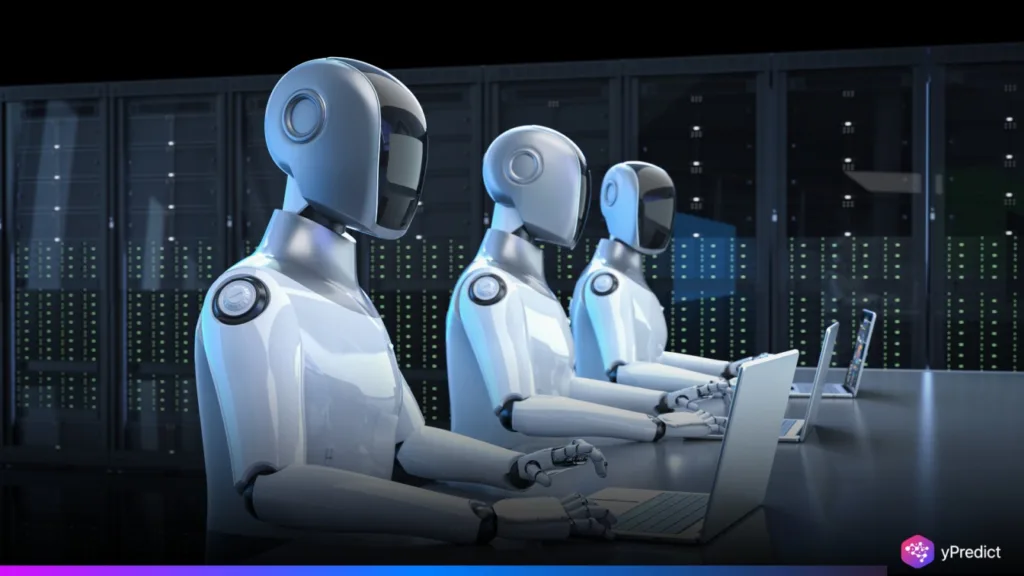
AI is supercharging data generation, raising urgent challenges for global storage infrastructure. Gavin Allen argues that while data is the new gold, its ever-expanding volume threatens to overwhelm outdated systems. The same source of this explosion, as well as the possible solution, lies in AI. Using intelligent AI storage systems allows maximizing capacity, automating tiering, increasing safety, and offering better energy efficiency. However, the way ahead is not easy since there are regulatory risks, a shortage of skills, and increased costs that are major deterrents. The next generation of data storage revolves not around higher capacity but around using AI to store and manage the data in an intelligent, secure, and long-term sustainable way.
Smart Storage – How AI Reinvents Infrastructure
The AI-generated data is too fast and too large to be stored on traditional storage models, HDDs, SSDs, and cloud platforms. Under the influence of AI, data storage becomes active, constantly learning and adapting to achieve optimization. Other major features encompass automated data classification: AI understands what data is mission-critical and stores it in high-speed storage, and the less frequently accessed data is stored in lower-cost long-term storage. This makes it quick without an excessive cost on speed.
Capacity forecasting is another leap; AI algorithms analyze usage patterns to predict demand and scale resources before a bottleneck occurs. This preemptive scaling reduces latency and system failures, especially in compute-heavy AI environments. AI also automates backup scheduling and disaster recovery, minimizing downtime and human error.
Security is a major frontier: AI systems detect behavioral anomalies in access patterns, helping thwart ransomware and insider threats before damage is done. AI doesn’t just alert; it acts. Meanwhile, power optimization tools powered by AI can dynamically manage energy loads, cutting power to idle servers and rerouting tasks to efficient systems. In effect, AI is turning storage into a self-healing, self-regulating nervous system that supports the weight of modern intelligence systems without crumbling under it.
Barriers to Adoption – Where AI Storage Still Struggles
Although it has the potential to transform storage, AI-powered storage lacks a plug-and-play characteristic. There are significant challenges to the adoption of the technology. The first one is expertise—the management of autonomous storage systems requires a hybrid combination of AI, IT infrastructure, and cybersecurity skills, which are rare and costly. Even trained AI without competent supervision will be incorrectly classifying the data, performing backup mismanagement, or creating openings. Another problem is data sovereignty and privacy rules. AI solutions find themselves in a moving maze of regulatory requirements such as GDPR, HIPAA, and local legislation on data. Automated decisions regarding the placement of data over jurisdictional boundaries can lead to legal issues if not handled properly.
Limitation also exists in terms of cost. High-end AI storage solutions may need dedicated hardware, fast networks, and even special software, so they become unaffordable to smaller companies. Although the long-run efficiency minimizes the operational expenses, the start-up cost is high.
Finally, the human control problem is a dilemma. Heavy dependency on AI brings black box decision-making; that is, one cannot know how or why some data was transferred, opened, or marked. It is particularly a source of concern in regulated fields such as banking or medicine, which have great importance in an audit trail. To make AI storage mainstream, vendors will need to address organizational challenges as well as technical ones, striking a balance between automating and being responsible, minimizing costs, and maximizing control.
The Future – Intelligent Storage for Intelligent Systems
AI is not just transforming how data is used; it’s redefining how data is stored. Intelligent storage systems that predict, protect, and self-correct in real time will be foundational to next-generation AI development. From training massive language models to powering autonomous vehicles, efficient data storage isn’t optional; it’s mission-critical. The shift is clear: storage isn’t about size, it’s about strategy. The winners will be those who embed intelligence into the infrastructure itself. If we succeed, we’ll unlock AI’s full potential without drowning in its byproduct, data. If we fail, the same data we generate for progress could become the weight that holds us back.






